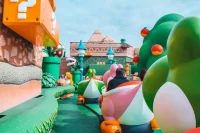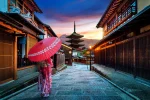What is Higashiyama Zoo and Botanical Garden, a popular spot in Nagoya? Explanation of attractions, access, etc.

Higashiyama Zoo and Botanical Garden, located in Higashiyama Park in Nagoya City, is a comprehensive park that combines a zoo and a botanical garden. Located in the heart of the city, yet surrounded by abundant nature, it attracts people of all ages and genders. It is also a popular date spot and recommended for families.
The park is divided into a zoo area and a botanical garden area, each of which is full of attractions. One of the attractions of the park is that visitors can spend their time as they wish, observing the adorable animals up close and enjoying the beautiful scenery of each season.
In this issue, we will introduce many ways to enjoy Higashiyama Zoo and Botanical Garden. From access information and highlights of the park to places to stop by in the surrounding area, there is plenty of information you will want to know before your trip.
To book a trip to NagoyaExpedia
▼Goandup Picks Click here for recommended articles!
- Required before studying abroad! Goandup Nihongo+, an online Japanese language learning service
- This page introduces services for foreigners who wish to study in Japan or improve their Japanese language skills to learn Japanese online.
- Goandup Salon" community for foreigners living in Japan
- We introduce an online community where foreigners living in Japan can exchange information and interact with each other to support their life in Japan.
- Goandup Study" supports foreigners who want to study in Japan.
- This section introduces study abroad support services that provide comprehensive support to foreigners who wish to study in Japan, from preparation for study abroad to living in Japan.
- Where can I buy a prepaid SIM in Japan? Recommended SIM cards for foreigners are also introduced.
- How to purchase a prepaid SIM and suitable SIM cards for foreigners.
- The Complete Guide to Pocket Wi-Fi in Japan for Foreigners!
- We introduce how to select and recommend pocket Wi-Fi products that can be used conveniently in Japan.
- The Complete Guide to Finding a Job in Japan! Finding a job, changing jobs, and part-time work for foreigners
- This site provides foreigners who want to work in Japan with comprehensive information on how to find a job, recommended job sites, and other information necessary to find a job.
What is Higashiyama Zoo and Botanical Garden?

Higashiyama Zoo and Botanical Garden is a vast zoo and botanical garden complex located in Higashiyama Park in Nagoya City. Approximately 500 animal species and more than 7,000 plant species live here, making it one of the largest zoos in Japan.
The park is divided into a zoo area and a botanical garden area, each with its own unique exhibits and facilities. In the zoo, visitors can observe a wide range of animals from popular animals such as elephants, giraffes, and koalas to rare killifish. The Botanical Garden, on the other hand, offers beautiful seasonal flowers, Japan's oldest public greenhouse, and a Japanese garden.
Higashiyama Zoo and Botanical Garden is a historic facility that opened in 1937, but has been renovated in recent years, making it an increasingly attractive spot. It is also popular among foreign tourists and has become one of the most popular sightseeing spots in Nagoya.
Higashiyama Zoo and Botanical Garden
| Addresses: (in Japanese) | 3-70 Higashiyama-Motomachi, Chikusa-ku, Nagoya City |
| open hours (of a park, garden, etc.) | 9:00 a.m. to 4:50 p.m. |
| no-holiday | Mondays, year-end and New Year holidays (December 29 to January 1) |
| kindergarten enrolment fee | Adults (high school students and older): 500 yen, junior high school students and younger: free |
How to get to Higashiyama Zoo and Botanical Garden
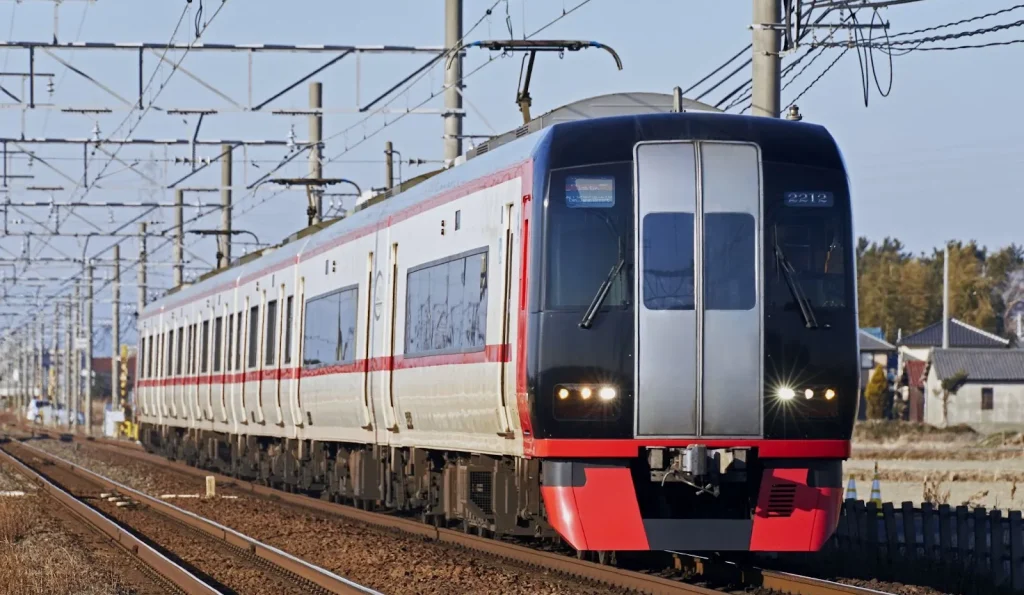
Public transportation is the best way to get to Higashiyama Zoo and Botanical Garden. Both train and bus options are available, so choose the one that best suits your purpose. Here are some tips on how to get there from the nearest station and what to expect if you go by car.
train
Higashiyama Zoo and Botanical Garden can be accessed from either "Higashiyama Koen" or "Hoshigaoka" station on the Nagoya Municipal Subway Higashiyama Line. It is recommended to get off at "Higashiyama Koen" station if you are going to the zoo, and at "Hoshigaoka" station if you are going to the botanical garden.
From either station, it is a very convenient 10-minute walk to the nearest entrance of Higashiyama Zoo and Botanical Garden. From Higashiyama Koen Station, take Exit No. 3, and from Hoshigaoka Station, take Exit No. 6.
car
When accessing Higashiyama Zoo and Botanical Garden by car, the Tomei Expressway or Nagoya Daini Kanjo Expressway is convenient.
On the Tomei Expressway, exit at the Nagoya Interchange and drive west on Prefectural Route 60 for about 15 minutes. If you are coming from the Nagoya Daini Kanjo Expressway, exit at the Kamisha Interchange or Kamisha Minami Interchange. Also, when coming from the Nagoya Expressway, take the Yotsuya Exit.
The park has a parking lot that can accommodate more than 1,000 cars. However, it may be crowded on holidays and consecutive weekends, so please allow plenty of time for your visit.
Zoo Highlights

At the Higashiyama Zoo, you can observe a variety of animals up close. Here are some of the zoo's most popular spots that you especially should not miss. Pay attention to the realistic expressions and gestures of the animals and feel their charm.
Zogeum, one of the largest elephant houses in Japan
If you are an elephant lover, you definitely cannot miss the ZoGeum, the pride of the Higashiyama Zoo. The ZoGeum was opened as a facility for research on elephant ecology.
At the ZoGeum, visitors can get a close-up look at elephants living in herds in a spacious area. In addition to observing the powerful elephants through glass, visitors can learn about elephant ecology through explanatory panels and specimens on display.
If you are lucky, you may be able to see elephants taking a bath and baby elephants playing energetically. This is a facility where you can fully experience the fascination of elephants.
Koala house" where you can see cute koalas
Koalas are one of the most popular animals at Higashiyama Zoo. Their fluffy and adorable appearance is hard to resist.
The Higashiyama Zoo's koala house is a space that recreates the ecology of koalas, and is characterized by a high tree walkway that matches the koala's love of climbing trees.
Koalas eat only eucalyptus leaves and spend most of the day sleeping, so they are often quiet whenever you see them. But that is also the charm of koalas. The sight of a koala slumbering peacefully is soothing.
Depending on the time of year, you may be able to see baby koalas.
Attractive "Bird Hall" with its fence-free walk-in style
Higashiyama Zoo's Bird Hall is a unique facility where birds and people can interact naturally. Because it is not separated by fences or nets, the main attraction is that visitors can see birds flying overhead at close range.
A variety of birds live in the Bird Hall, including macaws with brightly colored feathers, a toucan, and a graceful-looking peacock. If you are lucky, a bird may even come up to your feet.
However, the birds fly freely and you will not be attacked, but you may be startled by their sudden flight. Please be careful if you do not like fast-moving birds.
A rare exhibit specializing in killifish, "The World Medaka Pavilion.
Higashiyama Zoo has the World Medaka Pavilion, a rare exhibition facility featuring only killifish. Inside the museum, visitors can see about 50 species of killifish, ranging from native Japanese species to killifish from around the world.
The various types of killifish swimming around in different colors, patterns, and sizes are all adorable and soothing. You will lose track of time if you sit in front of the tank and observe them carefully.
In addition to medaka, there are also exhibits of freshwater fish such as Kawabatamoroko and Hotoke-dojo, which are hard to find elsewhere. The museum also has panels that explain the ecology of fish in detail, making it ideal not only for fish lovers but also for children's free research.
Highlights of the Botanical Garden
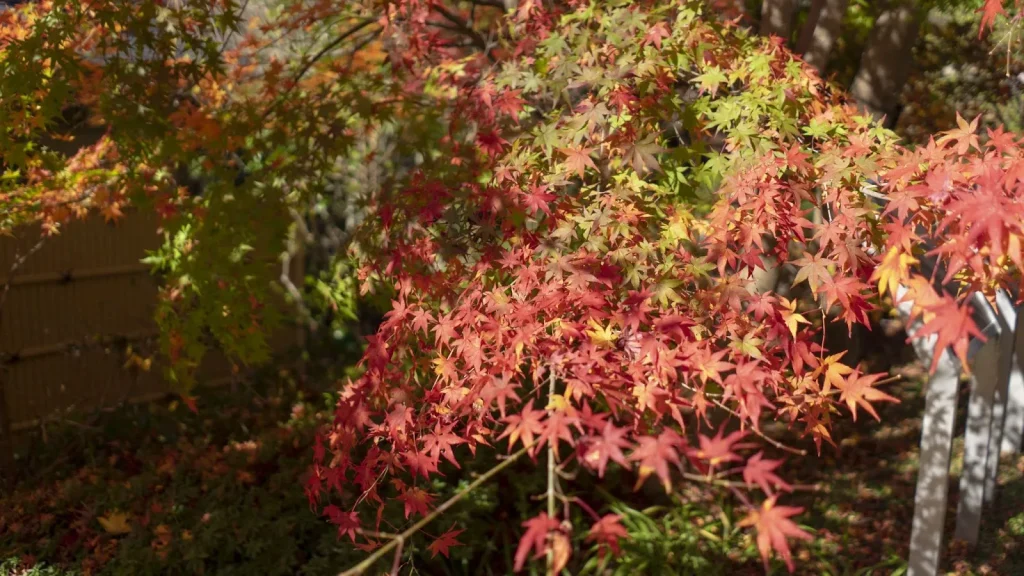
On the other hand, the Higashiyama Botanical Garden is attractive for its beautiful flowers that change from season to season. There are many hidden highlights of the botanical garden that are not well known. Why not take a stroll through the vast grounds and feel the changing of the seasons?
Enjoy plants from season to season.
The major attraction of the Higashiyama Botanical Garden is its rich nature, which shows different expressions in each season. More than 3,000 varieties of plants grow in the garden, and no matter what time of year you visit, you will find beautiful flowers.
In spring, someiyoshino cherry trees and tulips color the park, roses are at their best in early summer, and sunflowers, salvia, and other cheerful flowers bloom in summer. Autumn brings beautiful autumn foliage, and winter brings early spring flowers such as waxwings.
One of the major attractions of the Higashiyama Botanical Garden is that visitors can enjoy nature to their heart's content throughout the four seasons. Why not take a stroll through the nature-rich garden and feel the changes of the four seasons?
Japan's oldest public greenhouse
Higashiyama Botanical Garden has the oldest public greenhouse in Japan. Retaining its retro appearance, this valuable building has been used with great care for over 90 years.
The greenhouse is divided into a tropical plant area and a subtropical plant area, where visitors can observe tropical plants that they would not normally see. Visitors can't help but admire the unusual appearance of Washington palms, which can grow to more than 10 meters tall, and the giant giant lobsters, which have leaves shaped like planks.
The greenhouse is cool in summer and warm in winter, making it a pleasant place to appreciate plants even during the cold season. Why not spend a relaxing time with plants in a nostalgic atmosphere that evokes a sense of history?
Beautiful Japanese garden "Yaryuen
At the back of the Higashiyama Botanical Garden is the Yayuen, a dry landscape garden built in the late Edo period. The garden's name is said to come from the phrase, "Flowers are like a hundred days, and the moon is like ten thousand years.
This garden, with its beautiful scenery of white sand and green pine trees, is impressive for its greenery with exquisitely placed stones and mosses. The surrounding kyokusui (a kind of circular waterway) is also very tasteful. The appearance of the garden, reminiscent of a famous garden in Kyoto, is the very essence of a Japanese garden.
Yaryuen also offers a tea ceremony service in its tea room, Seifukaku, where visitors can enjoy powdered green tea. Reservations are required, but this authentic tea ceremony experience is recommended for visitors from abroad. Enjoying a cup of tea while admiring the beautiful garden is truly a moment of bliss. It will be an experience that will give you a taste of the depth of Japanese culture.
Gassho-Zukuri House" relocated from Shirakawa-go
Within the Higashiyama Botanical Garden are preserved gassho-zukuri houses that were relocated from Shirakawa-go in Gifu Prefecture, which is also a World Heritage site. Gassho-zukuri is a traditional architectural style in which wood is combined to form a triangular roof, characterized by its steeply pitched roof. This building was moved from Shirakawa Village in Gifu Prefecture to the Higashiyama Botanical Garden in 1956, and has become a valuable addition to the garden.
It is a valuable cultural heritage that offers a glimpse into the life of a mountain village in those days. Visitors can take a peek inside the houses, so it is interesting to learn about the interior structure of the gassho-zukuri style and the wisdom of life in those days.
Surrounded by seasonal flowers, visitors can enjoy the beautiful harmony of nature and private houses, and feel as if they have stepped back in time.
Recommended Hotels near Higashiyama Zoo and Botanical Garden

Around Higashiyama Zoo and Botanical Garden, there are a number of high quality hotels that represent Nagoya City. Here are some great places to stay that you may want to visit in combination with the Zoo and Botanical Garden.
Nagoya Marriott Associa Hotel
The Nagoya Marriott Associa Hotel, located in an excellent location directly connected to JR Nagoya Station, is perfect for trips to Higashiyama Zoo and Botanical Garden. It is conveniently located only 15 minutes by train from Nagoya Station to Higashiyama Park.
The view from the Sky Lounge, located on the upper floors, is spectacular and offers a panoramic view of the Nagoya cityscape. The hotel also offers a variety of restaurants and a spa, so we recommend spending a relaxing time at the hotel after visiting the Zoo and Botanical Garden.
For details and reservations at the Nagoya Marriott Associa Hotelclick here!
Nagoya JR Gate Tower Hotel
This is another popular hotel directly connected to Nagoya Station. Located in a 45-story high-rise tower rising in the center of Nagoya, it has a modern and sophisticated atmosphere.
The hotel's high-class facilities and services will allow you to enjoy a quality stay. At the restaurant on the top floor of the hotel, you can enjoy a buffet with a live kitchen and afternoon tea with a spectacular view. You are sure to have an elegant time.
With easy access to Higashiyama Zoo and Botanical Garden, this hotel is a perfect base for sightseeing.
For details and reservations at Nagoya JR Gate Tower Hotelclick here!
3. hotel forza nagoya sakae
Hotel Forza Nagoya Sakae, opening in 2021 in the Sakae area of Nagoya, is a new hotel boasting a stylish space. Located close to Higashiyama Zoo and Botanical Garden, it is an easy base for sightseeing.
Rooms are spacious and feature a simple yet sophisticated setup that combines functionality and design. Unique services such as complimentary welcome drink and free rental of smart phones are also available.
A hotel stay in a modern atmosphere is perfect after enjoying the nature of Higashiyama Zoo and Botanical Garden. You are sure to have a relaxing time.
For details and reservations at Hotel Forza Nagoya Sakaeclick here!
Recommended places near Higashiyama Zoo and Botanical Garden
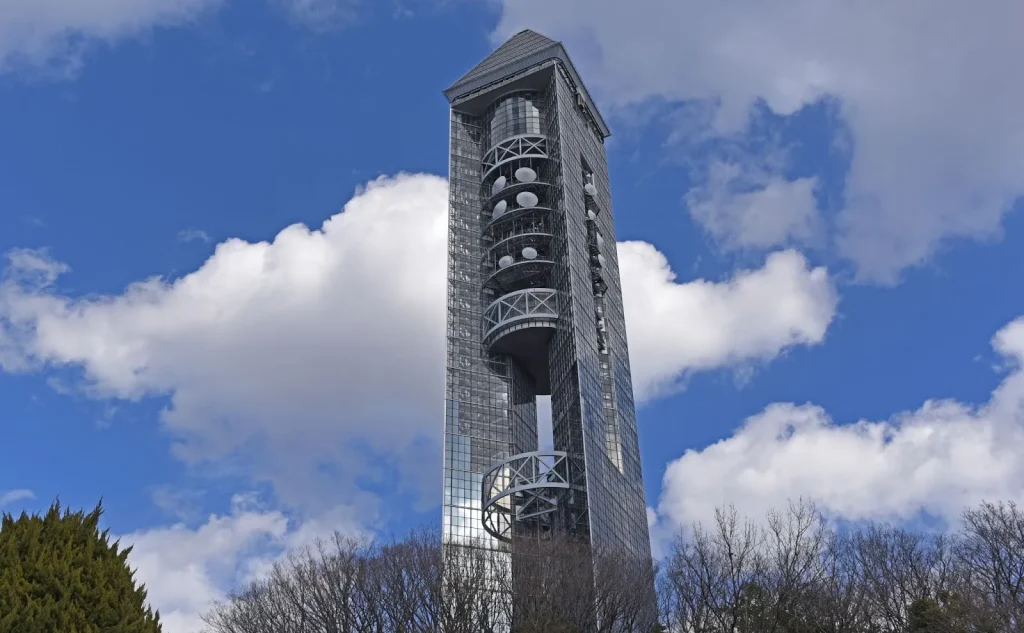
While sightseeing at Higashiyama Zoo and Botanical Garden, why not visit some of the nearby attractions? Here are some carefully selected spots filled with the charms of Nagoya.
Higashiyama Sky Tower
Higashiyama Sky Tower is a 134-meter-high observation tower located in Higashiyama Zoo and Botanical Garden in Nagoya City, built in 1989. 100 meters above ground, the observation deck offers a panoramic view of Nagoya City.
On a clear day, you can see Mt. Ontake and the mountain range of the Suzuka Mountains. Since there are no tall buildings around, you can enjoy a wonderful view day and night. The night view is especially spectacular, and the area is known as one of the best night view spots in Japan, having been recognized as a "Japan Night View Heritage" and one of the "100 Best Night Views" in 2004.
A casual Italian restaurant is attached to the top floor of the tower, where you can enjoy delicious meals and desserts while admiring the refreshing greenery during the day and the romantic night view at night.
- Address: 1-8 Tashiro-cho Ippoi, Chikusa-ku, Nagoya, Aichi, Japan
- Hours: 9:00 - 21:30 (admission until 21:00)
- Closed: Mondays, Year-end and New Year holidays
- Fee: 300 yen (640 yen for a common ticket for the Zoo and Botanical Gardens)
Reference:Higashiyama Sky Tower
2. the Great Buddha of Nagoya
The magnificent Daibutsu statue, known as the Nagoya Daibutsu (Great Buddha), is located at the Momoyama-ji Temple, a 15-minute walk from the Higashiyama Zoo and Botanical Garden. This bronze statue of the Great Buddha is 15 meters long, with the main image measuring 10 meters and the pedestal 5 meters high. Created by Buddhist priest Haruzan Osada, its imposing appearance is overwhelming to behold.
What is particularly unique is that instead of a typical lotus base, the main image is supported by ten elephants. Their entire bodies are painted a vivid green, and their eyes, lips, and ears are decorated with gold leaf, making them overwhelmingly powerful when seen up close.
The time spent holding hands in the tranquil atmosphere that evokes a sense of history is a different kind of healing experience from that of the zoo and botanical garden.
- Address: 2-16 Yotsuya-dori, Chikusa-ku, Nagoya-shi, Aichi
- Hours of operation: 【 summer 】 9:00 - 18:00 00【 winter 】 9:00 - 17:00
- Closed: No holidays
- Fee: Free of charge
Reference:Nagoya Great Buddha / Touganji Temple | 【 Official 】 Aichi Prefecture Tourism SiteAichi Now
3. Nagoya Castle
Nagoya Castle is a super classic spot that should not be missed when sightseeing in Nagoya. The castle tower, with its shining gold shachihoko, is a true symbol of Nagoya.
Inside the castle, visitors can also learn about the history of Nagoya, including the history of Tokugawa Ieyasu and Toyotomi Hideyoshi, and anecdotes about the generals of the Warring States period. There is also a museum store and a café, making it a great place to pick up souvenirs or take a break.
The charm of Nagoya Castle lies in its magnificent architecture and history, which deeply impresses visitors. Please visit and enjoy its magnificent history and beautiful scenery.
- Address: 1-1 Honmaru, Naka-ku, Nagoya City, Aichi Prefecture
- Hours of operation: 9:00-16:30
- Closed: December 29-31 and January 1 (4 days)
- Admission: Adults: 500 yen, Elementary school students and younger: Free
Reference: Nagoya Castle Official Website
4. Kinshachi Yokocho
Kinshachi Yokocho is located along the outer moat of "Nagoya Castle" and is a nostalgic sightseeing spot that recreates the atmosphere of a castle town in the Edo period. The area is a fusion of Nagoya's traditions and modern culture, and is lined with many restaurants and stores where visitors can enjoy Nagoya's local cuisine and local products. Restaurants where you can taste Nagoya's famous miso katsu (miso cutlet) and hittsumabushi are especially popular.
In addition, events are held regularly in Kinshachi Yokocho, attracting many tourists. Some events incorporate the latest technology and are designed to be enjoyable for both children and adults.
Kinshachi Yokocho is a must stop when visiting Nagoya Castle. You will be able to enjoy delicious food and a selection of souvenirs while experiencing the history and culture of the area.
- Address:
【 Yoshinao Zone 】 1-2-3-5 Sanomaru, Naka-ku, Nagoya City
【 Soharu Zone 】 1-2-3 Ninomaru, Naka-ku, Nagoya City - Business hours: 10:30-22:00 (varies by each store)
- Closed: No holidays
- Admission: Free
Reference:Kinshachi Yokocho-Kinshachi Yokocho
5 Toyota Commemorative Museum of Industry and Technology
The Toyota Commemorative Museum of Industry and Technology is located in the birthplace of the Toyota Group in Nishi-ku, Nagoya City, Aichi Prefecture. The museum features a spinning mill from the Taisho era (1912-1926), which has been preserved as an industrial heritage site. Visitors can experience the textile machinery that supported the development of modern Japan and the transition of modern automobile technology through exhibits and demonstrations of actual working machinery.
The museum is divided into two areas: the Textile Machinery Hall and the Automobile Hall. In each pavilion, realistic demonstrations are given using real machines, allowing visitors to experience firsthand the changes in industrial technology.
The Toyota Commemorative Museum of Industry and Technology is the perfect place to learn about the history and latest technologies of the Toyota Group and to deepen your understanding of future manufacturing. Many people visit the museum to experience the history of the development of industrial technology. We encourage you to visit.
- Address: 4-1-35 Noritake Shinmachi, Nishi-ku, Nagoya City
- Hours of operation: 9:30-17:00 (admission by 16:30)
- Closed: Mondays, Year-end and New Year holidays
- Fees: Adults: 1000 yen, college students: 500 yen, junior high and high school students: 300 yen, elementary school students: 200 yen
Reference:Toyota Commemorative Museum of Industry and Technology
There are still many other attractive spots around Higashiyama Zoo and Botanical Garden. For example, we recommend the popular commercial facility "Nagoya Noritake Garden". For more information, please see the following article.
▶︎ Tourist information on "Nagoya Noritake Garden", a popular commercial facility in Nagoya
summary
How was it? Higashiyama Zoo and Botanical Garden is a true treasure house of nature, filled with the charms of both a zoo and a botanical garden. In the zoo area, visitors can interact with a wide variety of animals, including elephants, koalas, and rare killifish, while in the botanical garden area, visitors can enjoy beautiful seasonal scenery and historic architecture.
The area is conveniently located near Nagoya Station, and the adjacent Higashiyama Park is also worth a stroll.
The Higashiyama Zoo and Botanical Garden is surrounded by historical buildings, commercial facilities, and industrial sightseeing spots. If you visit the zoo and the botanical garden together, you will be able to enjoy the various attractions of Nagoya.
Why not use Higashiyama Zoo and Botanical Garden as a starting point to enjoy Nagoya sightseeing to the fullest? We wish you a wonderful and unforgettable memory.
Reference:Higashiyama Zoo and Botanical Garden
Your support will help us!
Thank you for visiting Goandup Picks. Our mission is to provide you with more useful information to show the world what Japan has to offer.
Your support will help us to further enhance our activities, so please support us!


